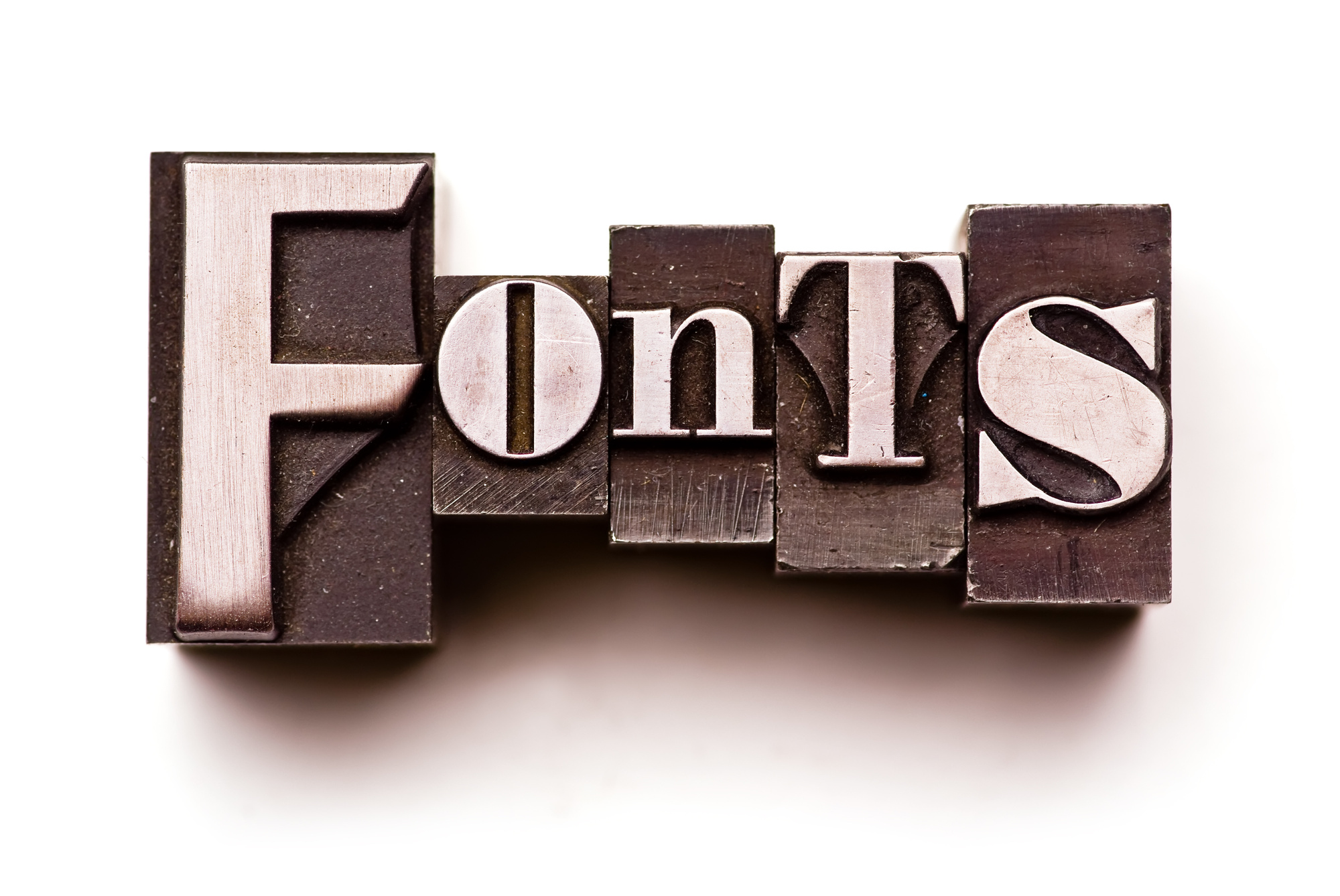Every font has its own personality. If you don’t believe it, compare the Instagram logo to The Wall Street Journal masthead. Completely different vibe, right?
Instagram’s logotype is a casual, friendly sans serif script. The New York Times is a traditional serif font. It conveys seriousness and stability. These fonts invoke very different images. In each case, the typeface embraces the mood and mission of the company it represents. The typeface is part of the message.
The power of a font is underrated. When it’s a good fit, no one notices. But if a typeface and message are out of sync, it’s jarring. Everyone senses something about the message seems wrong.
Choosing the best typeface for your project is vital to a clear message. Part of that clarity comes from readability. How do you choose the right font for your situation? Should you use serif or sans serif?
Is a serif typeface easier to read than a sans serif one? Let’s dig into the basics of fonts. We’ll look at the serif and sans serif typefaces, and myths about readability.
Font Classifications
There are four basic font classifications: serif, sans serif, script, and decorative. For this article, we’ll focus on serif and sans serif fonts. Let’s define each one before we discuss readability.
Serif Fonts
What’s a serif? It’s the small line at the end of the main stroke of a letter. It’s a small decorative feature at the top or bottom of the stroke. Times New Roman is a well-known serif font.
Serifs appear on all the letters and numbers of a typeface. It can be light or heavy, plain or decorative. The serif line may embellish the stroke to make the font unique.
Serif fonts are traditional, formal, and elegant. They’re used everywhere. You’ll find serif fonts in most printed books, magazines, and newspapers. The belief is the serifs on serif type lead the reader’s eye from one letter to the next in a story. The serif type pulls readers through the story making it easier to understand.
You’ll find serif fonts on display advertising, signage, and websites.
Sans Serif Font
Sans means without. A sans serif font doesn’t have any serif lines. The fonts have a modern feel. They’re friendly, clean, and minimal. Popular sans serif fonts include Arial and Helvetica.
Sans serif fonts were used for titles, headers, and pull quotes to stand out from the text. The sans serif type is more direct and simple than serif fonts.
The edges of a sans serif font can be precise or rounded. Sans serif typefaces come in a wide variety of shapes and widths.
You’ll find a lot of sans serif types on small screens like smartphones and tablets.
Font Myths vs Reality
Some of the common beliefs about serif and sans serif type are based on methods we no longer use for publishing. Think about it. Readability for a turn-of-the-century newspaper is different than today’s newsfeed on your smartphone.
Keep reading to see the new reality on font choices.
Serif Typefaces Work in More Than Print
Many people accept the myth that serif fonts should only be used in print. It simply isn’t true. Why limit your serif fonts to print only?
There’s a chance it made sense years ago when monitor quality was poor. Back then serif fonts probably looked better in print than on a computer screen. They may have been harder to read on a screen.
While questioned in the past, there’s no doubt you can use serif fonts anywhere online today. The screens on smartphones, tablets, and computers are high definition. Serif fonts are easy to read in print and online.
Don’t Limit San Serif Fonts to Digital
Another myth is that sans serif typefaces are only for use in digital publications. Not true. Sans serif has appeared in print for years. It’s silly to say it shouldn’t.
Look at any print publication and you’ll find creative and effective use of sans serif fonts. Many books and magazine use sans serif all through the publication.
Serifs Aren’t Hard to Read
Nope. Serifs are easier to read than san serifs. The eye recognizes serif letter shapes, which makes them easier to identify and read.
Sans Serifs Are Versatile
Sans serif fonts aren’t always informal. While a sans serif can be casual, it doesn’t have to be. Pair it with a formal image or topic, and it can match the message.
Sans serif fonts are flexible. Pair a sans serif font with a traditional serif for an instant classic. Mix a decorative script with sans serif to create a formal mood.
A Serif Doesn’t Fix Extra Spacing Between Letters
When someone uses a serif font to try to adjust spacing, the result isn’t pretty. A serif typeface alone can’t fix kerning (tracking) problems. Serifs don’t use more space than a san serif.
There is a fine art to typography which includes proper kerning between letters. A professional graphic artist can make your typography look outstanding.
Only Sans Serif Grabs the Reader’s Attention
No again. This myth isn’t true either. Think about the headlines in any newspaper or newsfeed. It’s not just the typeface that grabs the reader’s attention. It’s the entire package.
Design, images, color, contrast, typography, and content all work together to get attention.
Sometimes the words alone gain attention. More often it’s a combination of dramatic words and bold fonts that draw the reader to a story, ad, or message.
It’s Okay to Mix and Match Fonts
In the past, it was wrong to mix and match fonts. Today, it’s accepted and encouraged. If you’re worried about which fonts to combine, read a font pairing tutorial. You’ll learn combinations for sans serif and serif typefaces that grab attention.
Another tip for variety is to use many fonts from the same font family. A font family includes the related typefaces. The fonts will vary by weight and width but have a consistent design aesthetic.
Try different fonts from the same family for your primary, secondary, and accent typefaces.
If you want to get in on current trends, update your website with unusual fonts. You can add interest to the headers and subheads with unexpected fonts. It may help keep your readers on the page longer so they read more. Just make sure the funky fonts are readable.
Get Expert Design Advice
Today, most concerns over font readability aren’t based on the individual type category. Readability depends more on the actual typeface and how it’s used. This is true in print and digital projects. Serif and sans serif type work in a variety of situations. The key is to use all fonts in a way that supports your purpose.
The most important thing is to match your sans or serif typefaces to the mood of your project. If you want help with design choices, check out Design Desk for inspiration.











